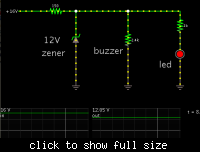- Joined
- Apr 1, 2011
- Messages
- 15,183
- Helped
- 2,900
- Reputation
- 5,812
- Reaction score
- 2,982
- Trophy points
- 1,393
- Location
- Minneapolis, Minnesota, USA
- Activity points
- 113,741
For me too there was a time when I did not understand how a 12V transformer could create a power supply of 16V.
Eventually I found out that's how high the peak of the sinewave goes.
I read a book from Radio Shack explaining how transistors work. I saw but I didn't understand.
I had to start playing with real transistors, before I could get any idea of what was going on.
I built projects from schematics. If the project worked, it meant I had followed instructions.
It took a lot of hands-on experimenting, for any of it to sink in.
Even a simple thing like a zener diode can be used in many ways.
But long explanations are too hard to follow.
Do some experimenting and enlightenment comes.
Eventually I found out that's how high the peak of the sinewave goes.
I read a book from Radio Shack explaining how transistors work. I saw but I didn't understand.
I had to start playing with real transistors, before I could get any idea of what was going on.
I built projects from schematics. If the project worked, it meant I had followed instructions.
It took a lot of hands-on experimenting, for any of it to sink in.
Even a simple thing like a zener diode can be used in many ways.
But long explanations are too hard to follow.
Do some experimenting and enlightenment comes.





